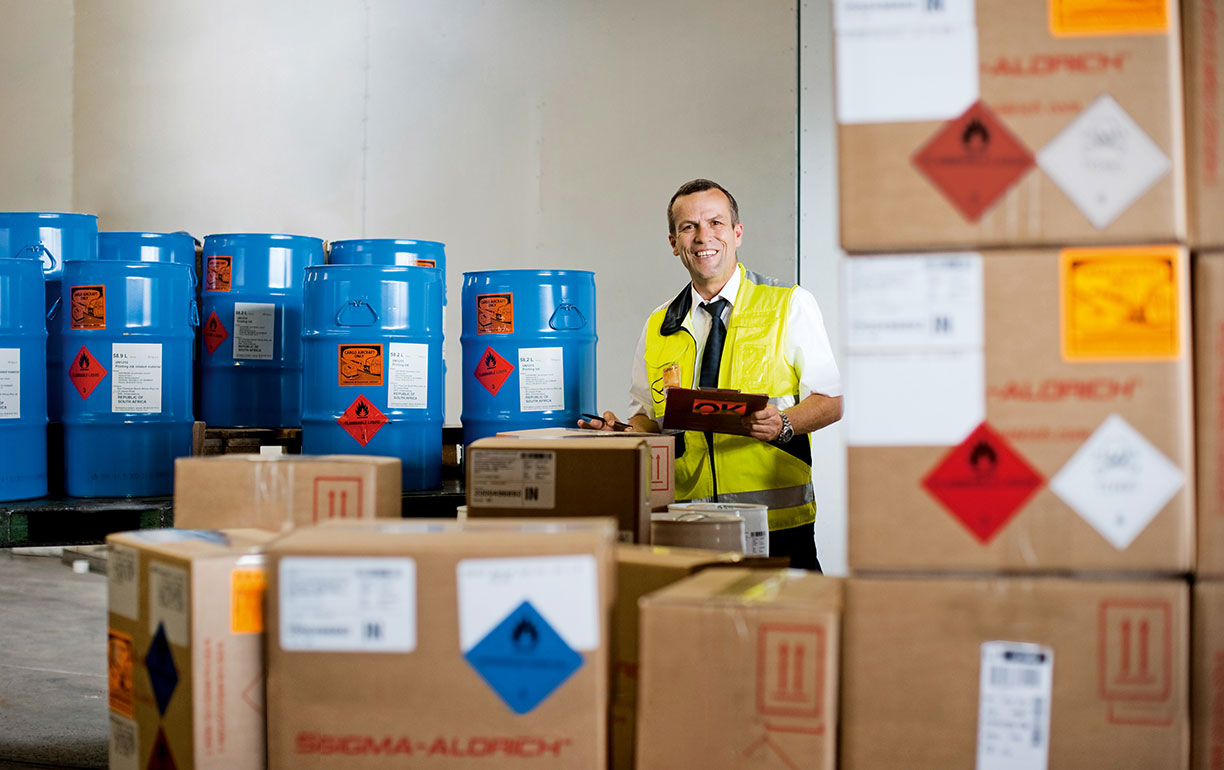
If in doubt, no compromises.
The book is a sizeable tome: 910 pages in DIN A4 format. In this one publication, the International Air Transport Association (IATA) lists what must be observed when transporting dangerous goods in aircraft. “This thing here,” says Rainer Gross, looking at the set of rules five centimeters thick, “is my bible.” The “Dangerous Goods Regulations” (DGR) meticulously specify which substances and chemicals are classified as dangerous for transportation by air and how they must be packaged, labeled and loaded. The DGR are subdivided into nine hazard classes. They include explosive, flammable, toxic and corrosive substances. That radioactive material is classified in the DGR was to be expected. But some people will be surprised to discover that hairspray, automobile airbags, towelettes, hydrogen peroxide, which is used to dye hair blond, and an ordinary fire extinguisher are also on the list of dangerous goods.
|
What is viewed as dangerous sometimes varies from one country to the next. In the U.S., for example, lithium-metal batteries are only allowed to be transported in cargo aircraft and not in the cargo holds of passenger airliners. In Germany, on the other hand, the transportation of these button cells, which are often used in watches and cameras, is permitted on board passenger aircraft – providing the quantity does not exceed five kilograms per package. If it does, the stipulation here too is: cargo aircraft only! “We don’t accept any compromises” What is allowed to be transported in an aircraft and how this cargo has to be packaged is a science in itself. The IATA set of rules requires 144 pages alone on blue paper to list all relevant dangerous goods. The packaging regulations are even more extensive. It is outlined on yellow paper between pages 353 and 552 how which product must be packaged – whether in crates, barrels or canisters and which materials are to be used when doing so. The latter range from cardboard and wood to plastic and steel. Sometimes, composite packaging is required. Each substance is assigned “its” specific packaging. “We don’t accept any compromises,” emphasizes Rainer Gross, one of 18 specialists for dangerous goods at Lufthansa Cargo’s hub in Frankfurt: “Safety has top priority. That is in the interest of the manufacturers, the forwarders and, last but not least, the airlines.” In a separate depot for dangerous goods, Rainer Gross inspects each of the 85 barrels with printing inks, which are today scheduled to be flown from Frankfurt to Johannesburg. |
Do they have dents, are they damaged or are there any leaks? A few meters further along, he then checks cartons containing batteries for China: the boxes dance through his hands. For seconds his eyes are fixated on each of the six sides. The maxim of the dangerous goods specialist is: every carton has six sides and every side could be damaged. So every side is examined. “All shipments,” says Gross, “are checked physically and in a documentary form for completeness, intactness and proper labeling. The data in the air waybill and the shipper’s declaration for dangerous goods must also tally.” If the Lufthansa specialists discover security-relevant damage to the cargo or inconsistencies in the documentation and marking of the packages, there are no compromises. The consignor must rectify the situation. Otherwise, the cargo is not taken on board. “What may at first glance seem to be ‘red tape’ is in fact our uncompromising safety philosophy,” stresses Gross. This pays off. The DGR specialist cannot recall “when we have had any problems with dangerous goods on board a Lufthansa aircraft”. With globalization the business with dangerous goods is booming for Lufthansa Cargo. Last year, approximately 47,000 tons were flown. In the current year, this figure will probably be higher. Whether special chemicals, paints, fertilizer, radioactive isotopes for cancer therapy at university clinics or airbags and belt tensioners for the automobile industry – the list of shipments classified as dangerous goods is long. Nevertheless, says Rainer Gross, the risk remains manageable: “If the shipment has been properly declared, documented and packaged in accordance with IATA requirements, there are no problems.” He and his 17 colleagues make sure of that. |
Photos:
Stefan Wildhirt
